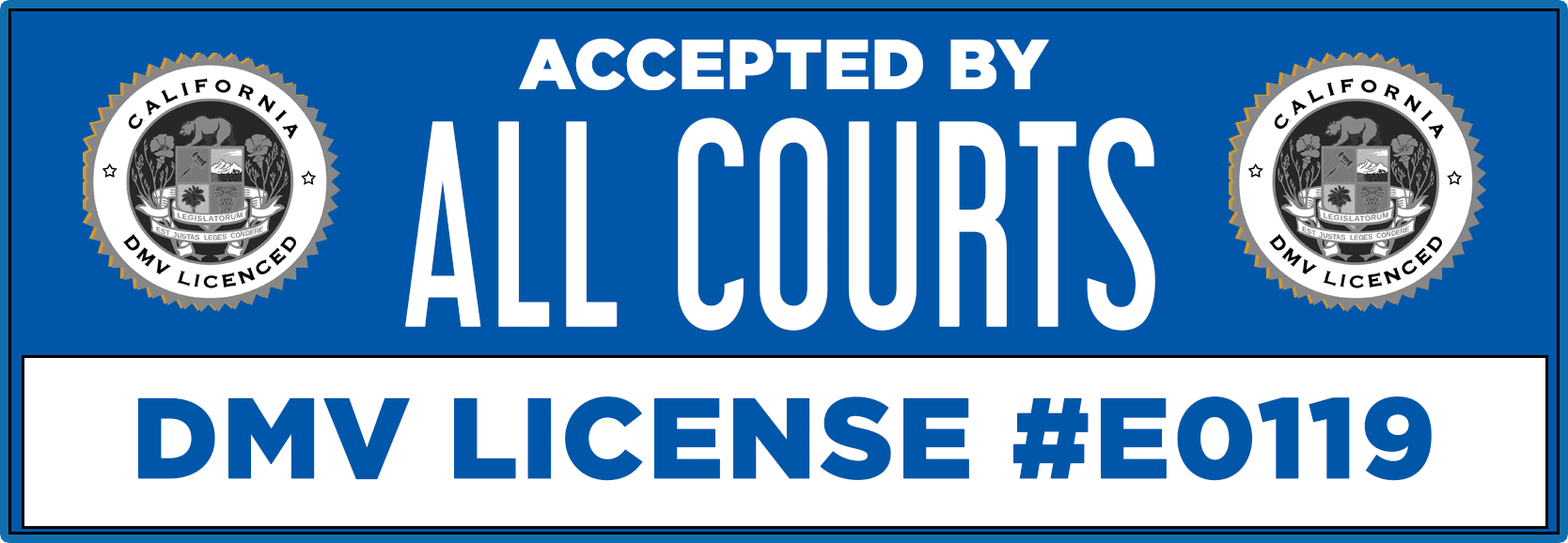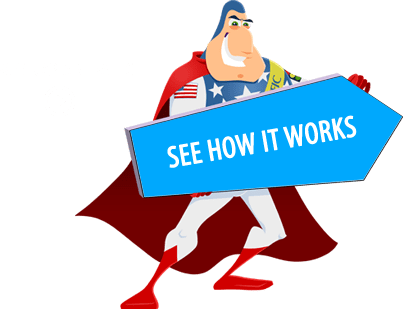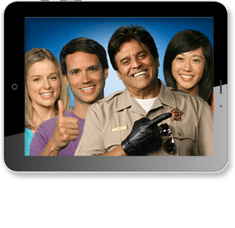When To Use Your Headlights
- Use your headlights when it is cloudy, raining, snowing, or foggy.
- On frosty mornings when other drivers’ windows may be icy or foggy.
- Any time you have trouble seeing other cars. Other drivers will be having trouble seeing you, too.
- On small country or mountain roads.
- It is a good idea to drive with your headlights on, even on sunny days. This will help other drivers see you. Your headlights may help you avoid a head-on crash. Don’t forget to turn them off when you park!

ComedyTrafficSchool.com When To Use Your Headlights
SEEING CLEARLY As a driver, it is important to adjust to the DRIVING ENVIRONMENT, taking into account the following:
Is it day or night?
What are the road conditions?
Are there any other types of driving distractions?
What are the weather conditions?
If you can’t see 400 feet ahead, it means you can’t drive safely at 55 mph. If you can’t see 210 feet ahead, you can’t drive safely at 35 mph. By the time you saw an object in your path, it would be too late to stop without hitting it. Adjust your driving to the weather. You should slow down in rain or fog. Turn on your lights during the day if it is hard to see. It is always illegal to drive with only your parking lights on.
Fog: The best advice for driving in the fog is DON’T. You should consider postponing your trip until the fog clears or at least carefully planning your route before you drive. If you must drive, then slow down and turn on your low-beam headlights because the light from high beams will reflect back and cause glare. Never drive with just your parking or fog lights. Increase your following distance and be prepared to stop within the space you can see in front of your vehicle. Avoid crossing or passing lanes of traffic unless absolutely necessary.
Listen for traffic you cannot see. Use your wipers and defroster as necessary for best vision. If the fog becomes so thick that you can barely see, pull completely off the road. Look in the rear view mirror for vehicles approaching. Do not continue driving until you can see better. Turn off your lights or someone may see your taillights and drive into you.
Darkness: Be very careful when you drive at night. Go slower because you cannot see as far. Motorcycles are harder to see at night because most have only one taillight. You will have less time to stop if a hazard lies ahead. Make sure you can stop within the distance lighted by your headlights.
The law says you must turn your headlights on 30 minutes after sunset and leave them on until 30 minutes before sunrise. You must turn your lights on any time you can’t see at least 1000 feet ahead. Use your low beam headlights whenever it is raining. Remember, it is always illegal to drive with only your parking lights on.
Use low beams in fog, snow, or heavy rain. Light from high beams will reflect back and cause glare. Remember, it is just as important to BE SEEN by other drivers as it is for YOU to see THEM.
Do not blind other drivers with your high beam headlights. Dim your lights by switching to low beams before you are 500 feet from a vehicle coming toward you. If you are following another vehicle, change to low beams when you get closer than 300 feet. Use your high beams whenever possible as long as it is not illegal (i.e., in open country when other cars are not near or on dark city streets when no other traffic would be affected by your high beams).
CVC section 24400 – Required usage of headlights
Windshield Wipers On = Headlights On – every motor vehicle, other than a motorcycle, be operated with headlamps whenever weather conditions prevent a driver from clearly discerning a person or other motor vehicle on the highway from a distance of 1000 feet, or when driving in conditions that require windshield wipers to be in continuous use.
Factors Affecting Headlight Use
Weather Conditions
- Rain: Use low-beam headlights during rain to improve visibility and help other drivers see you. High beams can reflect off the rain and create glare, making it harder to see.
- Snow: In snowy conditions, use low-beam headlights as high beams can reflect off the snowflakes, reducing your visibility.
- Fog: Always use low-beam headlights in fog. High beams will reflect off the fog and create a wall of light, making it harder to see. Fog lights are also recommended when available.
Time of Day
- Dawn and Dusk: Headlights should be used at dawn and dusk when visibility is reduced but not completely dark, as this helps other drivers see you.
- Nighttime: Use your headlights from 30 minutes after sunset until 30 minutes before sunrise, as required by law. High beams should be used in dark, rural areas where there is no oncoming traffic.
Driving Environment
- Urban Areas: In well-lit urban areas, low-beam headlights are usually sufficient. High beams can blind other drivers and are often not necessary.
- Rural or Unlit Roads: High beams are useful in rural or unlit areas to see further ahead. However, always switch to low beams when another vehicle is approaching or when following another vehicle.
Advanced Techniques for Headlight Use
Using Headlights to Improve Safety
- Daytime Running Lights (DRLs): Many vehicles are equipped with DRLs, which help other drivers see you during the day. If your vehicle does not have DRLs, consider manually turning on your headlights during the day for added visibility.
- High Beam Usage: Use high beams whenever you are driving in an area with no oncoming traffic and no vehicles ahead. Always be prepared to switch to low beams within 500 feet of an oncoming vehicle or when following another vehicle within 300 feet.
Legal and Safety Considerations
Legal Requirements
- Headlights and Windshield Wipers: The law requires that you turn on your headlights whenever you use your windshield wipers in rain, snow, or fog. This ensures that your vehicle is visible to others in poor weather conditions.
- California Vehicle Code Section 24400: This section requires the use of headlights from 30 minutes after sunset to 30 minutes before sunrise and when visibility is less than 1,000 feet.
Educational Resources
Simulation and Practice
- Headlight Use Simulations: Many driving schools offer simulations to practice appropriate headlight use. These simulations can help you understand when to use low beams versus high beams and how to adjust your driving habits based on visibility.
Frequently Asked Questions (FAQs)
When should I use my high beams?
High beams should only be used in rural areas or on unlit roads when there is no oncoming traffic or vehicles ahead as they provide the best visibility, but can be intrusive to other drivers.
Can I drive with only my parking lights on?
No, it is illegal to drive with only your parking lights on. Headlights must be used from 30 minutes after sunset to 30 minutes before sunrise and whenever visibility is less than 1,000 feet.
What should I do if my headlights fail while driving?
If your headlights fail, slow down and pull off the road immediately. Use your parking lights or hazard lights to make your vehicle visible to others. Check the headlight switch and the fuses to identify the problem.
Proper use of headlights is crucial for safe driving, especially in adverse weather conditions and at night. Understanding when and how to use your headlights can significantly improve your visibility and safety on the road. To learn more, enroll today at ComedyTrafficSchool.com to take our award-winning course that will help improve your driving and ensure you have fun along the way!
When you enroll in a traffic school program, you will learn about the topics mentioned above and more. A motor vehicle can be a safe mode of transportation, or it can be a very dangerous weapon. If you want to learn how to increase the chances of making it to your destination in one piece, complete our traffic school online today. The program is ComedyTrafficSchool.com. Take online traffic school the fun way with our award winning course. Our traffic school course is the perfect choice for anyone who recently received a traffic ticket; keep points masked from your driving record, your auto insurance rates low and become a better, safer driver!





